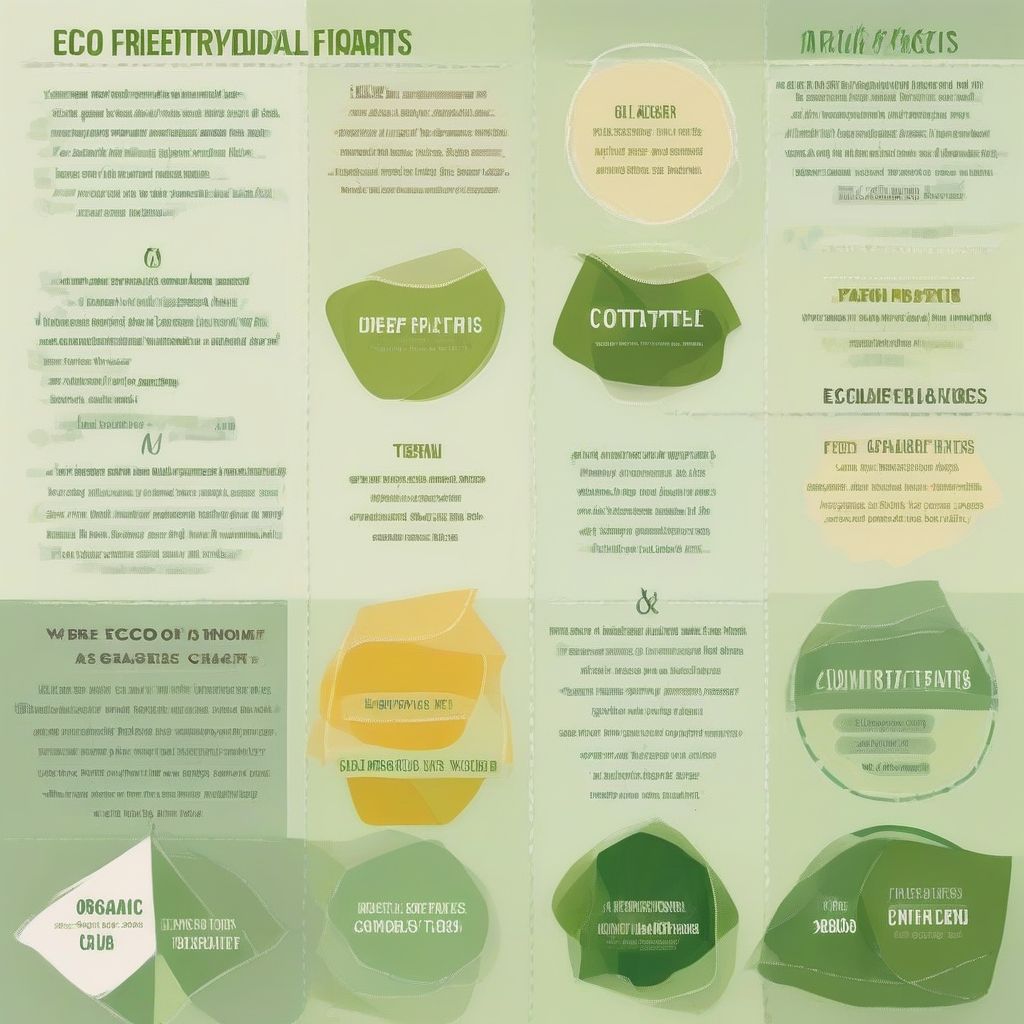Have you ever stopped to think about the environmental impact of your clothing? It’s easy to get caught up in the latest trends, but the fashion industry is a major polluter. Luckily, there’s growing awareness about sustainable fashion, and as a nutrition and meal prep coach, I see parallels in making conscious choices about what we put on our bodies and in our bodies. Just like choosing nourishing foods, we can opt for eco-friendly fabrics that are healthier for both us and the planet. But how can we empower consumers to make informed decisions? Let’s unravel the threads of knowledge and explore practical strategies.
Understanding the Need for Eco-Friendly Fabrics
The fashion industry is notorious for its environmental footprint, contributing significantly to water pollution, greenhouse gas emissions, and textile waste. Traditional fabrics like cotton, while natural, often rely heavily on pesticides, water, and land. Synthetic fabrics like polyester, derived from petroleum, are not biodegradable and release microplastics into the environment when washed.
Educating consumers about these impacts is crucial. When people understand the “why” behind eco-friendly fabrics, they’re more likely to embrace the “what.”
Effective Ways to Educate Consumers
1. Transparency and Labeling
Clear and concise labeling is paramount. Terms like “organic cotton,” “recycled polyester,” or “Tencel” can be confusing for consumers unfamiliar with their meanings.
- Provide clear definitions: Use hang tags, website information, and in-store signage to explain what makes a fabric eco-friendly.
- Highlight certifications: Look for certifications like GOTS (Global Organic Textile Standard), OEKO-TEX Standard 100, and the Fair Trade Certified™ logo, which signify adherence to strict environmental and social standards.
- Share the story: Use storytelling to connect with consumers on an emotional level. For example, explain how choosing organic cotton protects farmers’ health and conserves water.
2. Engaging Content Marketing
Consumers are bombarded with information, so it’s essential to make learning about sustainable fabrics engaging and accessible.
- Create informative blog posts and articles: Share insights into different eco-friendly fabrics, their benefits, and care tips.
- Develop eye-catching infographics and visuals: Use visuals to break down complex information, like the lifecycle of a garment, into easily digestible pieces.
- Utilize social media effectively: Run interactive campaigns, host Q&A sessions with sustainable fashion experts, and share user-generated content of people embracing eco-friendly fashion choices.
 Eco-Friendly Fabric Comparison Chart
Eco-Friendly Fabric Comparison Chart
3. Empowering Consumers Through Knowledge
Knowledge is power. When consumers are armed with the right information, they can make informed decisions.
- Organize workshops and webinars: Host events that delve deeper into sustainable fashion, covering topics like fabric choices, ethical production, and mindful consumption habits.
- Collaborate with influencers and educators: Partner with individuals who have a dedicated following and can authentically promote the benefits of eco-friendly fabrics.
- Encourage questions and dialogue: Create a space where consumers feel comfortable asking questions and seeking guidance on making sustainable choices.
4. Making Eco-Friendly Fabrics Accessible
While awareness is essential, accessibility is equally crucial.
- Promote affordable options: Highlight brands offering eco-friendly fabrics at various price points, demonstrating that sustainable fashion doesn’t have to be expensive.
- Support local and sustainable brands: Encourage consumers to explore brands that prioritize ethical production and locally sourced materials.
- Make it easy to find and purchase: Provide resources and directories that list retailers and online stores specializing in eco-friendly fabrics.
5. Emphasize the Longevity and Versatility of Eco-Friendly Fabrics
Many eco-friendly fabrics, such as organic cotton, linen, and hemp, are known for their durability and longevity.
- Educate consumers on proper care: Explain how to wash, dry, and store eco-friendly garments to prolong their lifespan, reducing the need for frequent replacements.
- Highlight versatility: Showcase how eco-friendly fabrics can be styled for different occasions, demonstrating their practicality and appeal.
- Encourage a shift in mindset: Promote a “fewer, better things” philosophy, emphasizing quality over quantity and investing in timeless pieces that will last.
Conclusion: Weaving a Sustainable Future
Educating consumers about eco-friendly fabric choices is not just a trend—it’s a necessary shift towards a more responsible and sustainable fashion industry. By embracing transparency, leveraging engaging content, empowering consumers with knowledge, making sustainable options accessible, and highlighting the longevity of eco-friendly materials, we can collectively weave a brighter and more eco-conscious future for fashion.
What steps will you take to make more sustainable fabric choices? Share your thoughts and actions in the comments below!
[amazon bestseller=”sustainable fashion”]
